What to Do in Capitol Reef National Park, Utah
Even though it may be one of the most underrated national parks in the American Southwest, that doesn’t mean that there aren’t a bunch of fun things to do in Capitol Reef National Park.
This relative unfamiliarity, however, can be a huge plus for people looking for a quieter and more secluded national parks experience.
Capitol Reef is a great place to get away from the crowds that overrun other nearby Arizona and Utah parks like Zion, Bryce Canyon and Grand Canyon.
It offers you the chance to enjoy wonderful desert scenery in solitude, go on hikes without running into dozens of other hikers, and to explore both Native American and Mormon pioneering sites.
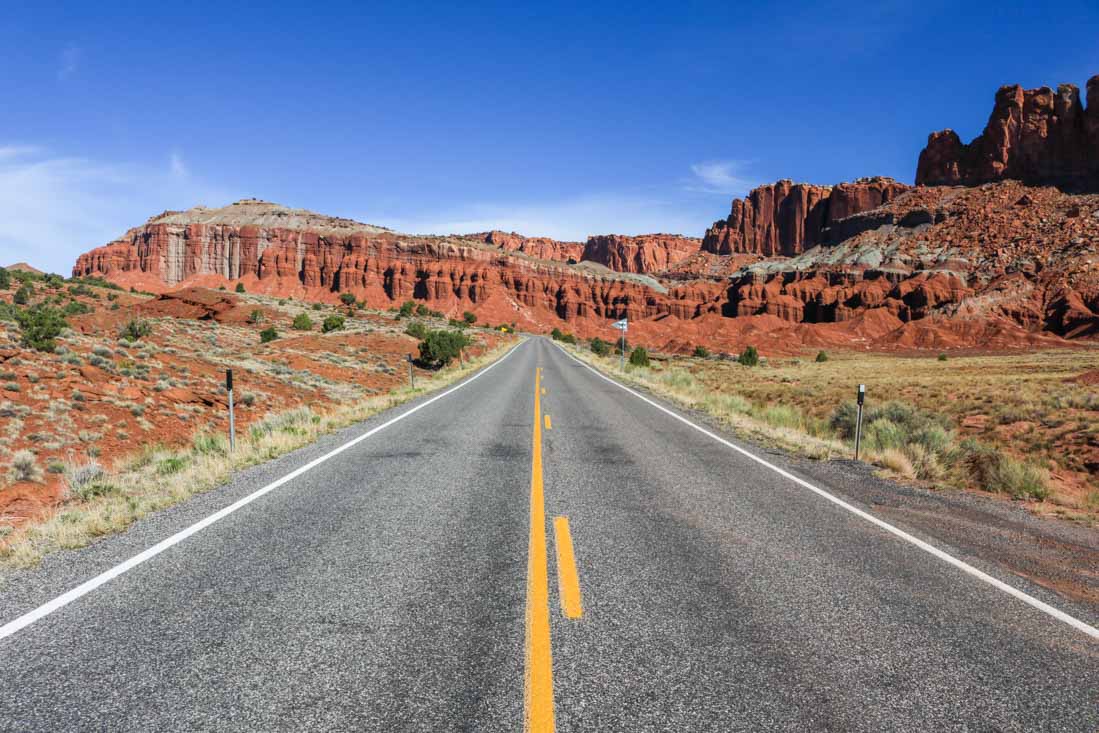
This blog post about the best things to do in Capitol Reef National Park contains affiliate links. You can read more about our Terms of Use / Disclosure here.
A rather large park extending for almost 100 miles along the Waterpocket Fold, a geological wrinkle in the Earth’s crust that proved to be a majestic barrier to westbound explorers, Capitol Reef is a wonderful playground for all kinds of outdoorsy people.
Photographers, geologists, wildlife watchers, hikers, mountain bikers, rock climbers, campers and stargazers alike will enjoy spending time here.
The park’s main natural feature, the Waterpocket Fold, was compared to a reef that blocks the passage of a ship. Hence, half of the park’s name.
The other part comes from the towering white sandstone domes in the park, which, with some imagination, resemble the dome of the U.S. Capitol in Washington, D.C.
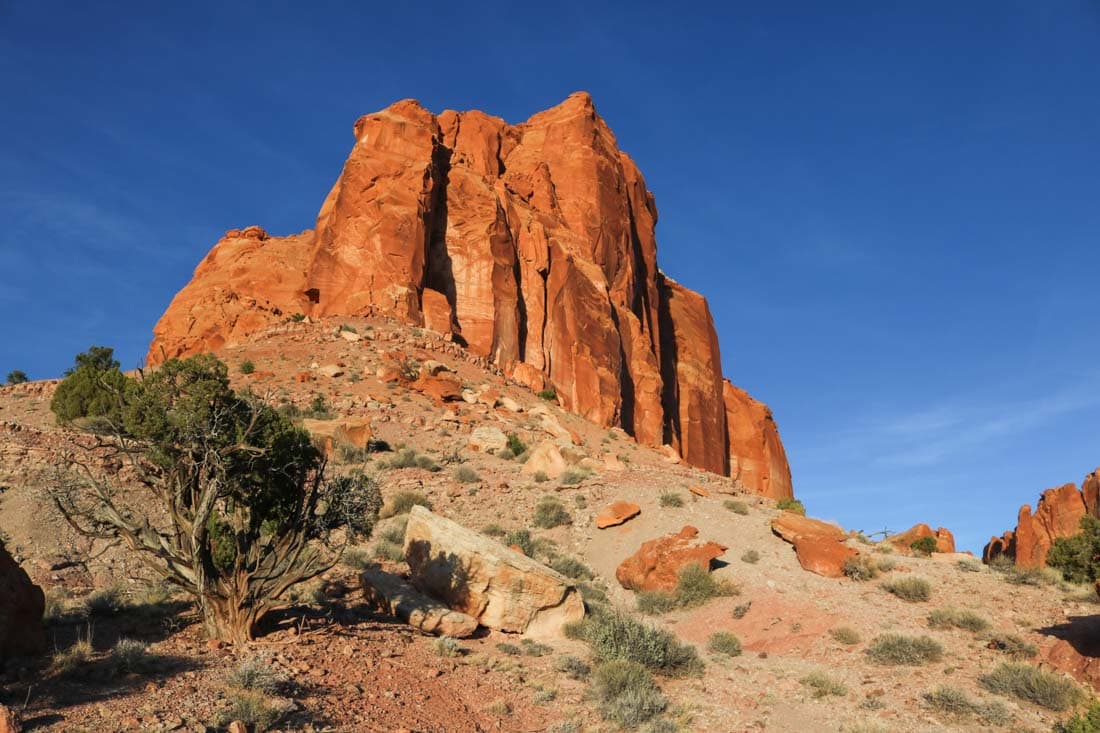
10 Amazing Things to Do in Capitol Reef National Park, Utah
Characterized by red sandstone cliffs, desert plains and white domes, the number of Capitol Reef National Park attractions is higher than you might expect. There’s something for everyone in this park.
You can go for scenic drives, see both ancient archaeological and pioneering sites, go for a strenuous hike and indulge in a slice of freshly baked fruit pie afterwards. In the evening, enjoy a desert sunset and camp under the stars.
Below, you’ll find my personal Capitol Reef activities. These are the very best things to see in Capitol Reef National Park, of which there are many.
This is, after all, one of my favorite national parks in America for a few different reasons. It is surprisingly attractive, there’s a wide variety in Capitol Reef National Park highlights, and the park is super-easy to reach.
1. See Beautiful Gifford Homestead
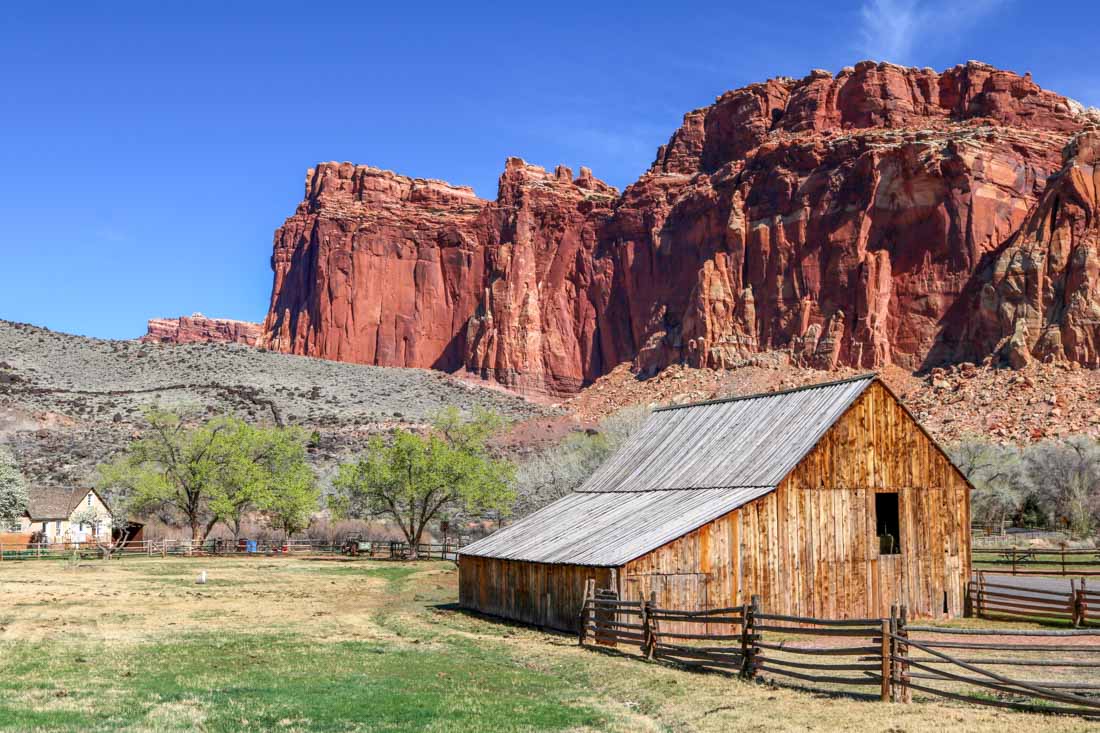
The Fruita settlement lies on the fertile banks of the Fremont River, a little desert oasis surrounded by the cliffs and formations of the Waterpocket Fold.
Home to the park headquarters, visitor center, picnic areas and a campground, Fruita is a logical starting point for trips to all Capitol Reef attractions.
The community originated in the 1880s and consisted of twelve Mormon families. Some families were polygamists, searching for—and having found—a quiet place away from social (and governmental) judgment.
One of the few remaining Fruita homesteads is the iconic Gifford Homestead, comprising of the main house, a smokehouse and a barn, which is one of the most photogenic national park buildings in the USA.
2. Walk to Hickman Bridge
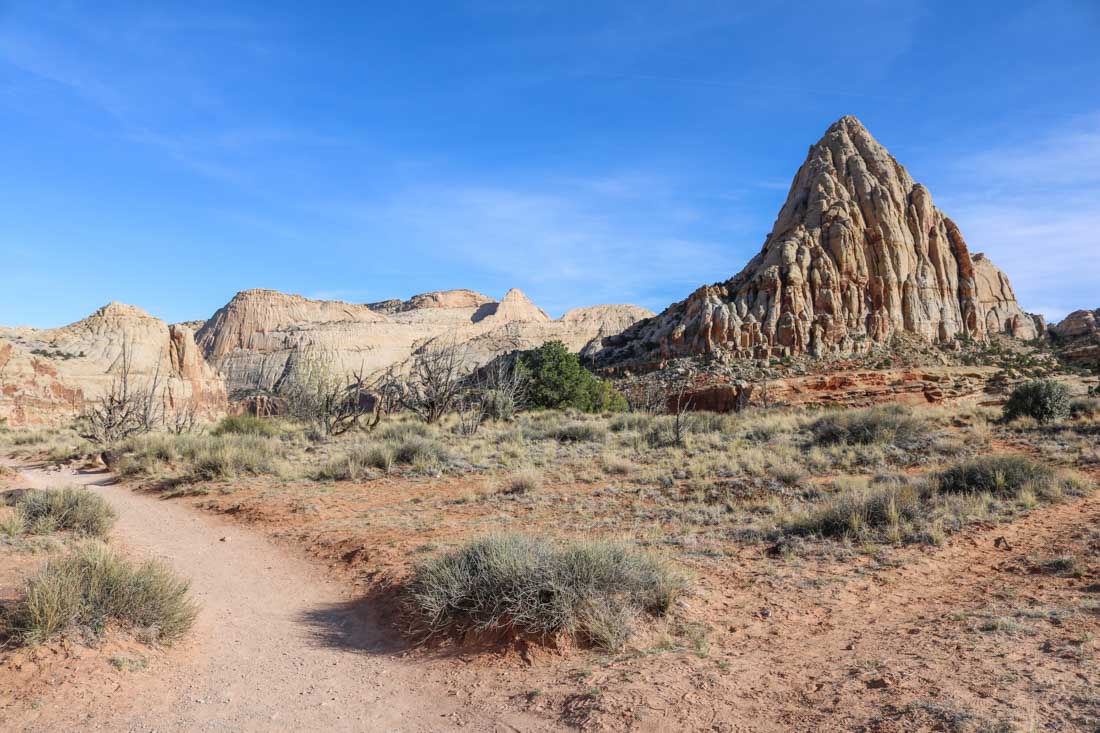
One of the nicest (and one of the easiest) Capitol Reef National Park hikes, the Hickman Bridge Trail is a short path leading to a massive rock arch, a huge 133-foot-long curve of stone backed by sheer rock cliffs.
No longer than 0.9 miles one-way, the trail offers great canyon views and runs through a desert wash.
A great introduction to the park’s geology and charm, this pleasant desert walk is one of the top things to do at Capitol Reef National Park.
3. Explore the Capitol Reef Scenic Drive
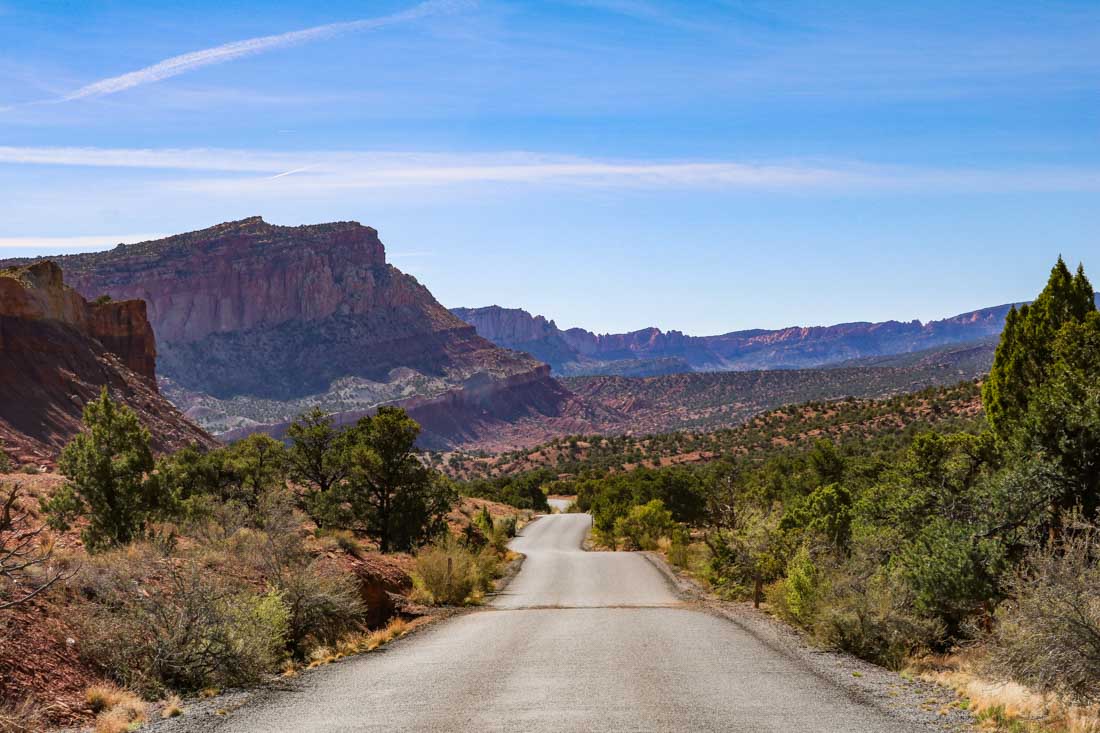
Starting at the Capitol Reef visitor center in Fruita, the 13-mile roundtrip Scenic Drive runs southward to Grand Wash and Capitol Gorge.
Note that, while Utah Highway 24 is a free public road, this scenic national park drive requires the payment of a $20 vehicle entrance fee. The price is well worth it, though.
The road winds through the west side of the Waterpocket Fold, into dramatic desert landscapes and past several pullouts and trailheads.
If you’re interested in more detailed information about points of interest along the Scenic Drive in Capitol Reef National Park, you can pick up a guide at the bookstore in the Fruita visitor center.
Note that the Scenic Drive will be closed for a significant part of 2024. More information here!
4. Admire Native American Petroglyphs
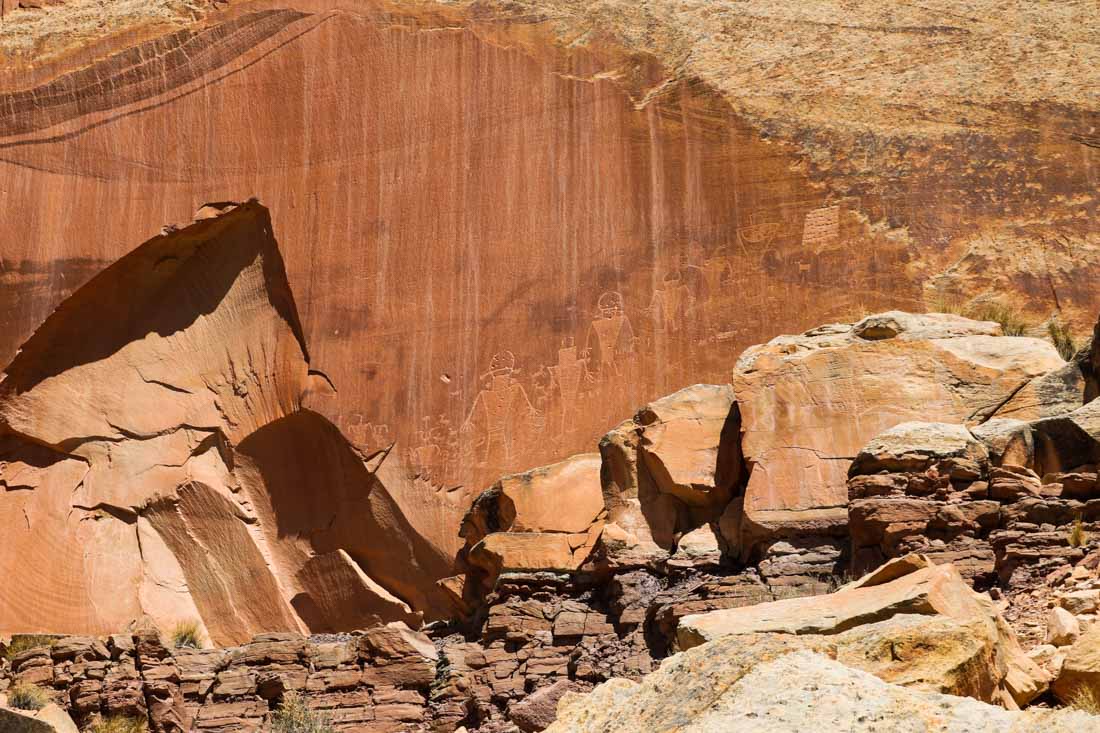
Along Highway 24, just over a mile east of Fruita, you can see a rock wall covered with ancient Native American petroglyphs.
Capitol Reef used to be the home of people of the Fremont Culture from about 600 to 1300 AD, who left their marks in the form of these fascinating rock carvings, which include images of bighorn sheep and anthropomorphs.
5. Hike Beneath Towering Cliffs on the Grand Wash Trail
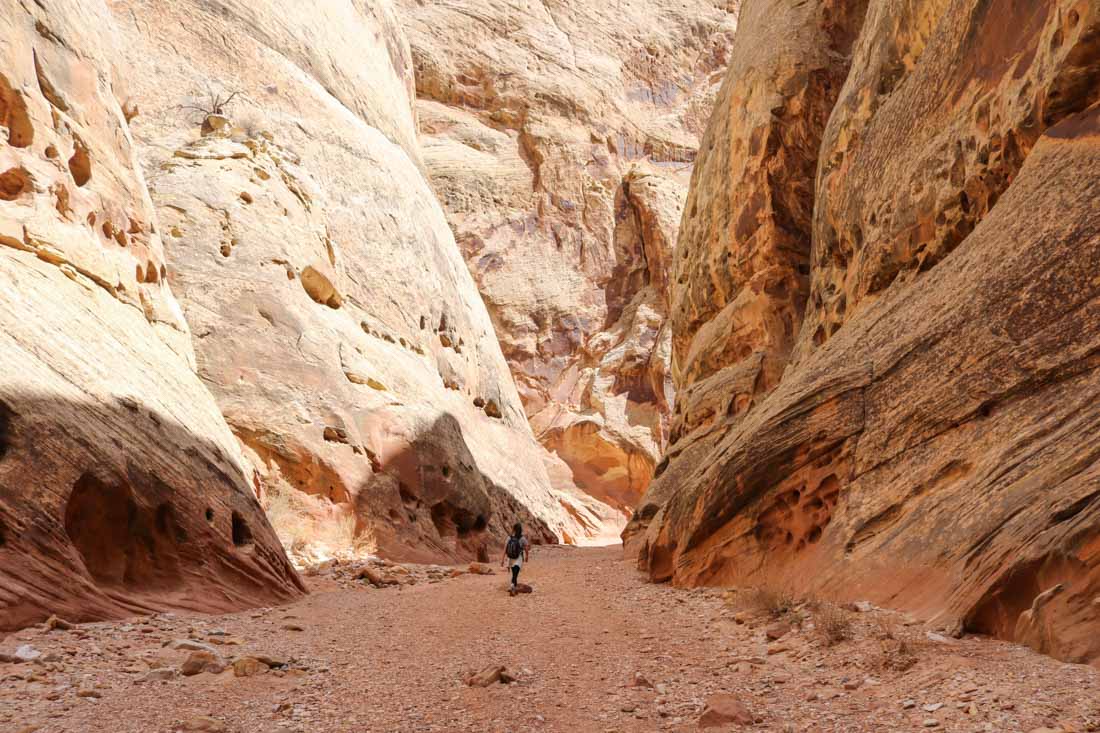
The Grand Wash Trail is truly one of the best hikes in Capitol Reef National Park.
Even though this is a park dotted with majestic rock formations and huge, imposing domes, no other place in the park can make you feel like a dwarf quite like Grand Wash.
The trail literally is a desert wash that runs through a deep canyon, flanked on both sides by towering rock walls.
There are two starting points for this 4.4-mile out-and-back hike.
One is reached after a quick drive on an unpaved side road off the Capitol Reef National Park Scenic Drive, while the other is on Highway 24, about 4.5 miles east of Fruita.
Without hardly any elevation gain or loss at all, this is one of the park’s easiest hikes. If you have kids and want to go on a hike, this is one of the most fun things to do in Capitol Reef National Park.
6. Watch the Sunset at Chimney Rock
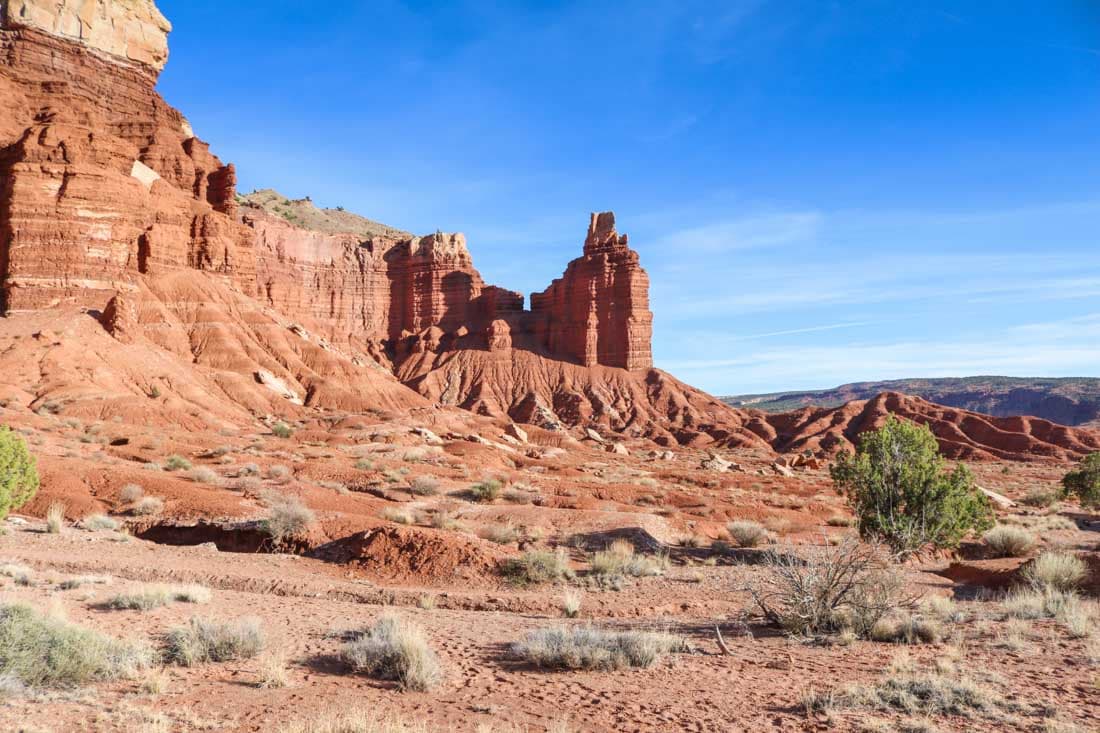
What to do in Capitol Reef National Park in the evening, you ask? Enjoying a warm desert sunset is definitely the proper answer!
When you enter the park from the west, Chimney Rock is one of the first imposing rock formations you will notice. The Chimney Rock Trail ascends and loops around the plateau behind Chimney Rock.
While climbing up, the view of this remarkable natural feature is your reward. Besides the initial climb, this is actually a pretty easy hike.
Once you’re on the plateau, the panoramic vista of the Waterpocket Fold will certainly stop you in your tracks. Spend a few minutes gazing out at it in awe.
This is one of the most inspiring views in the park. But that’s not all, just because of those panoramic views, this also makes for one of the greatest places to watch a Capitol Reef National Park sunset.
7. Walk Though Cohab Canyon
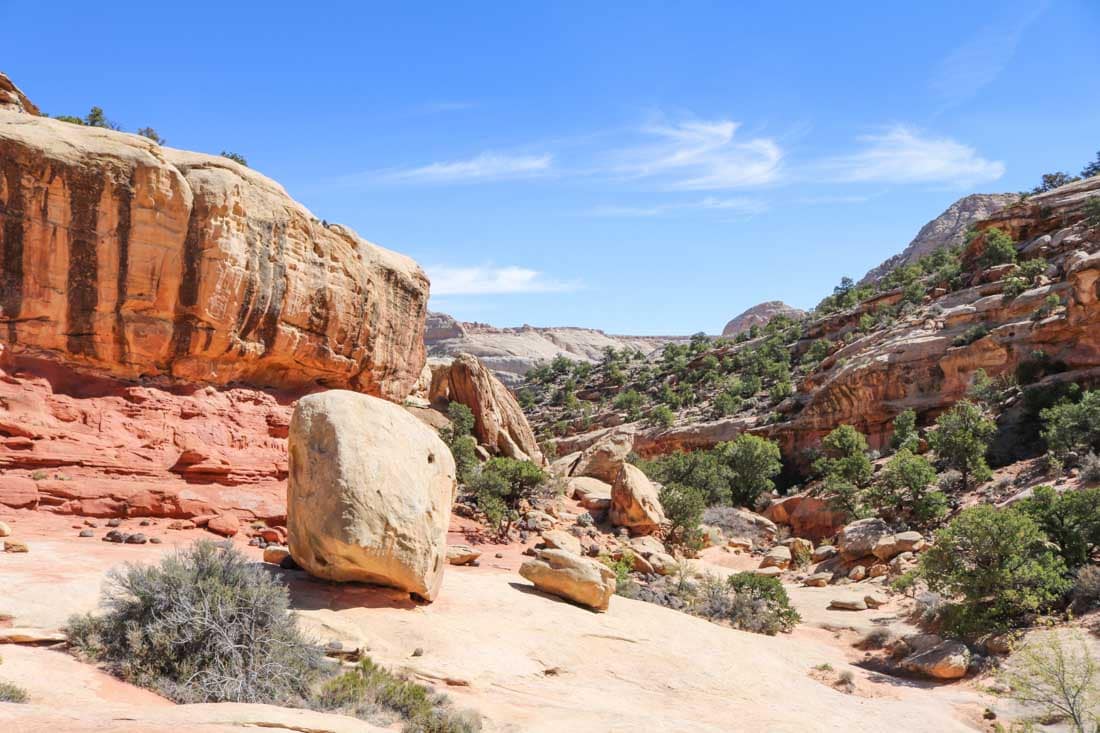
A beauty of a trail, and often overlooked, the Cohab Canyon trailhead lies across the road from the campground in Fruita.
The steep start of this 3.4-mile roundtrip hike is rewarded soon, when you arrive at a gorgeous flat plateau characterized by red rocks, washes, canyons within canyons, and sandstone formations.
On your way to two viewpoints overlooking Route 24 and Fruita below, narrow slot canyons wait to be explored, while the overall scenery of the entire area is simply beautiful.
It’s one of the my favorite short Capitol Reef National Park trails.
8. Relax in the Fruita Orchards
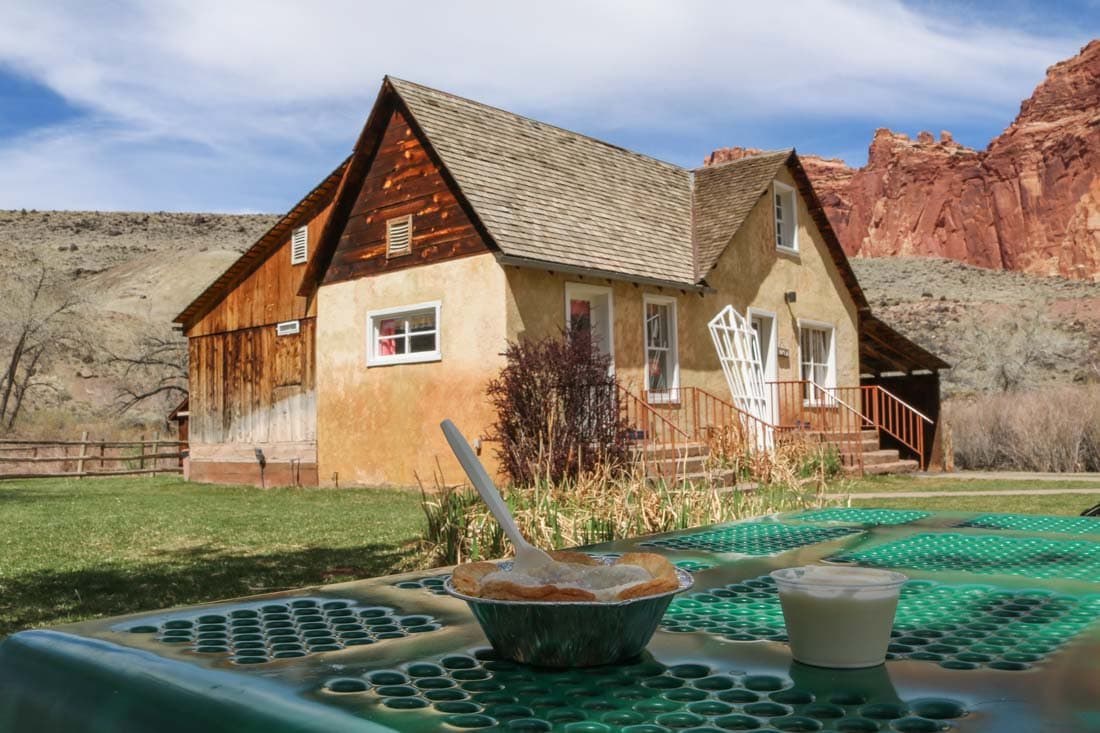
The original Mormon settlers planted and harvested various fruits, including peaches, apples, cherries and apricots. Many of those orchards are still there and visiting them is one of the most popular things to do in Capitol Reef National Park.
There’s nothing quite like relaxing in the shade of an apple tree after a sweaty hike, while savoring a slice of freshly baked pie and a scoop or two of ice cream.
You can get lots of fun homemade foods at the Gifford House, such as pies, jars of pickled vegetables, jams and honey.
9. Photograph Desert Scenery during Golden Hour
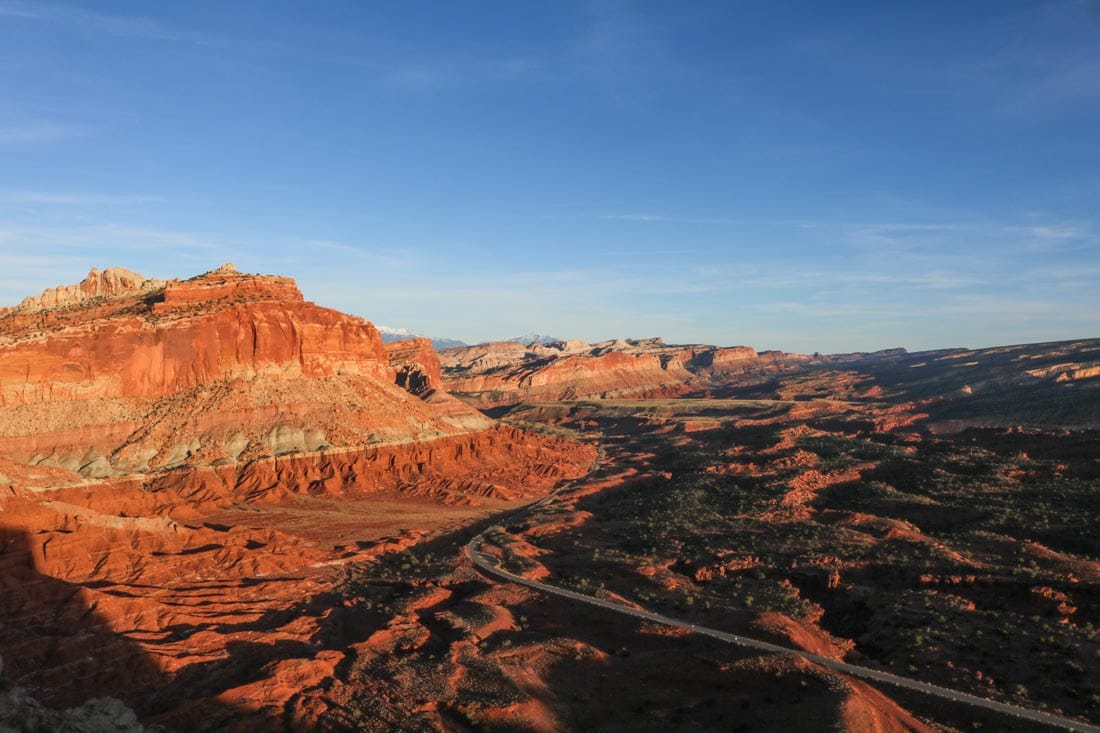
There are numerous exceptionally photogenic national parks in the USA, that’s no secret. However, I personally think that few compare to Capitol Reef in terms of variety and golden hour potential.
The best times of day for photography in Capitol Reef National Park are sunrise and sunset, when low-angled sun rays create shadows and shade, contrast and color.
Photo ops are available pretty much anywhere. There are various viewpoints, hikes to scenic overlooks and trails through canyons. Subjects are virtually endless, ranging from lightning-struck trees to bright red cliffs.
10. Admire the Impressive Night Sky
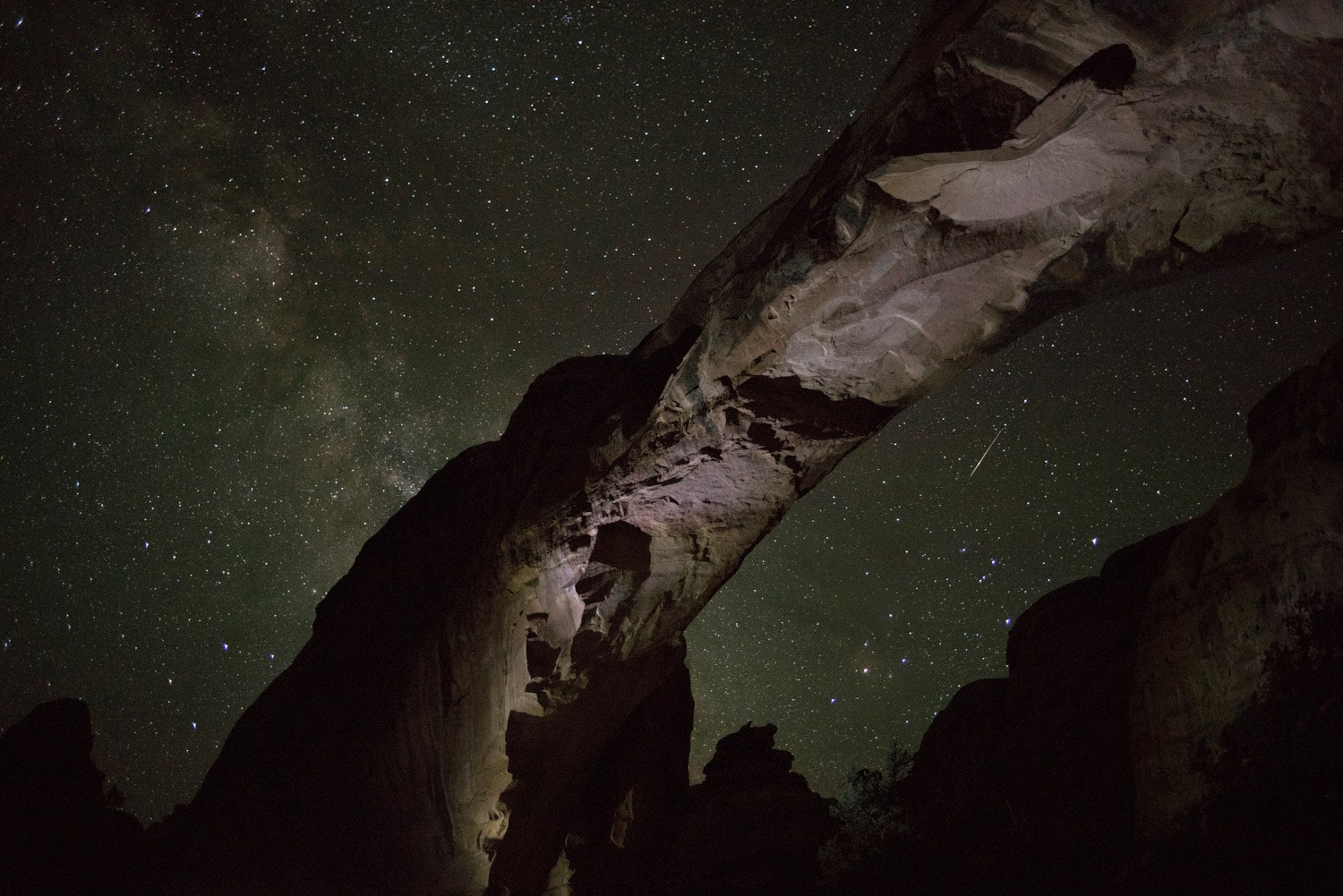
If you’re wondering what to do in Capitol Reef National Park at night, the answer is simple. Stargazing!
Officially designated as an International Dark Sky Park, this is one of America’s top national parks for night sky viewing.
Capitol Reef’s remote location in a desert region results in exceptionally clear night skies free from any light pollution. There are no major towns anywhere nearby and, as such, there’s no artificial light blocking the twinkling stars above.
Visiting Capitol Reef National Park FAQs
Where Is Capitol Reef National Park?
Capitol Reef is in south-central Utah, in the heart of red rock country and around the Waterpocket Fold. It’s the middle one of Utah’s five national parks.
Although it has many remote corners, Capitol Reef is amazingly accessible. In fact, Utah State Route 24, a public highway, runs through the very heart of the park.
Combined with other highways, this scenic drive connects the national parks in southwestern Utah (Zion and Bryce Canyon) with those in the southeast (Canyonlands and Arches).
How to Get to Capitol Reef National Park?
The nearest interstate is I-75, which passes by just north of the park. The state’s capital, Salt Lake City, is home to a major airport and is a 3.5-hour drive away.
- Zion National Park to Capitol Reef National Park: 175 miles (3.5 hours)
- Bryce Canyon to Capitol Reef National Park: 110 miles (2.5 hours)
- Salt Lake City to Capitol Reef National Park: 220 miles (3.5 hours)
- Moab to Capitol Reef National Park: 140 miles (2.5 hours)
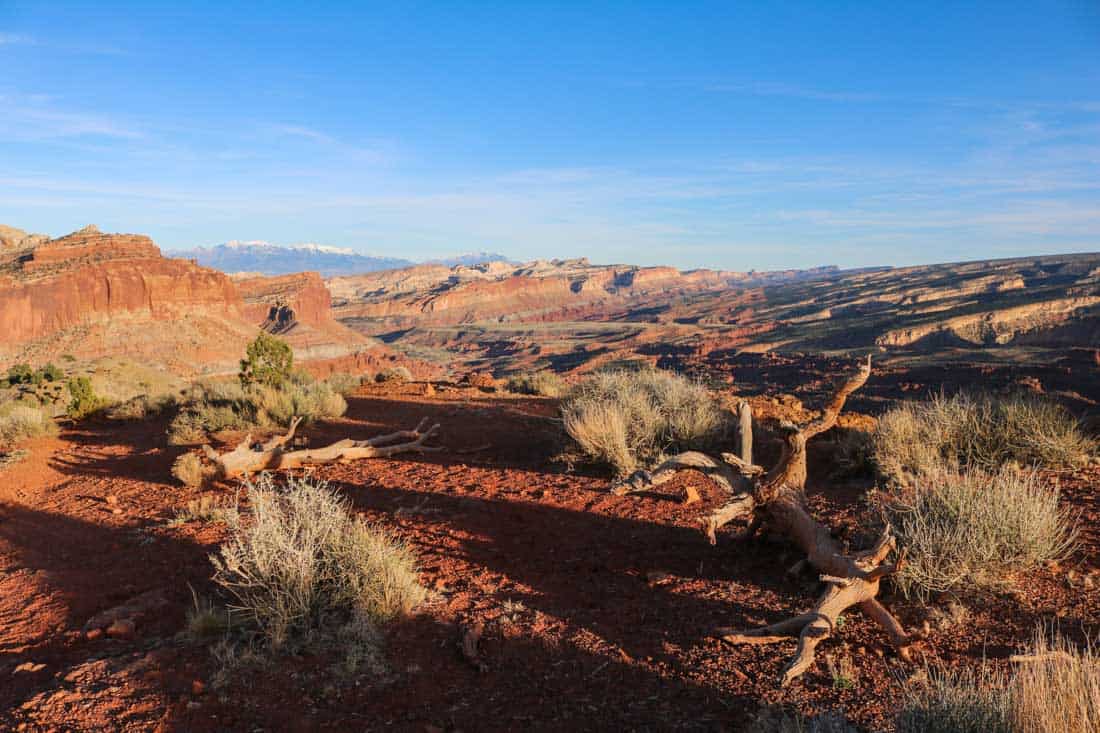
Can You Drive Through Capitol Reef National Park?
Yes, absolutely! Utah State Route 24 runs through the very heart of the park. This is a public highway and, as such, is completely free.
Along the way, you’ll find many of the attractions in Capitol Reef outlined above, including Chimney Rock, Hickman Bridge and the Native American petroglyphs.
Additionally, there’s also the Capitol Reef Scenic Drive, which explores a portion of the park south of Fruita. To get there you have to pay an entrance fee.
Is There a Capitol Reef Entrance Fee?
Yes and no. As I said in the answer above, Utah State Route 24 is a public and free highway through the park. The Scenic Drive, on the other hand, requires the payment of an entrance fee.
Check the National Park Service website for current entrance fees to drive the Scenic Drive.
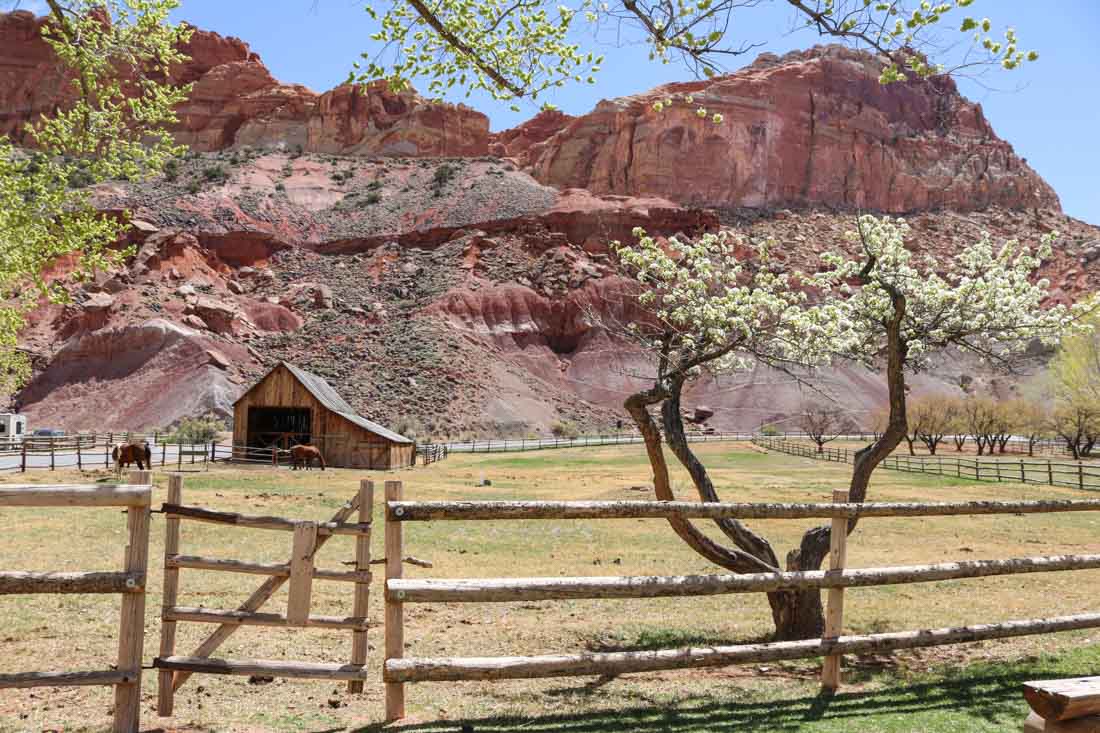
How Much Time Should I Spend in Capitol Reef National Park?
While many visitors spend only a day in Capitol Reef National Park, or even less by simply driving through, I strongly recommended that you dedicate two days and at least one night to this park.
Do it justice, don’t rush through it. There’s plenty to see and do in Capitol Reef National Park, as you’ll have seen above!
With all the things to do in Capitol Reef National Park mentioned above, your Capitol Reef National Park itinerary will be jam-packed, even if you spend two full days there.
You could easily spend a day exploring Fruita and the visitor center in the morning, and driving the Scenic Drive and doing a hike in the afternoon.
This gives you a nice introduction to the park, but trust me, it’ll leave you wanting more. Hence, a second day, which you can use to take in a couple of other hikes.
What Is the Best Time to Visit Capitol Reef?
The best time of year to visit Capitol Reef is spring, when temperatures in the desert are still bearable and nights are comfortable.
Spring is also when the trees in the Fruita orchards are bloom, which is a delightful sight.
This is, after all, one of America’s greatest parks for a spring vacation.
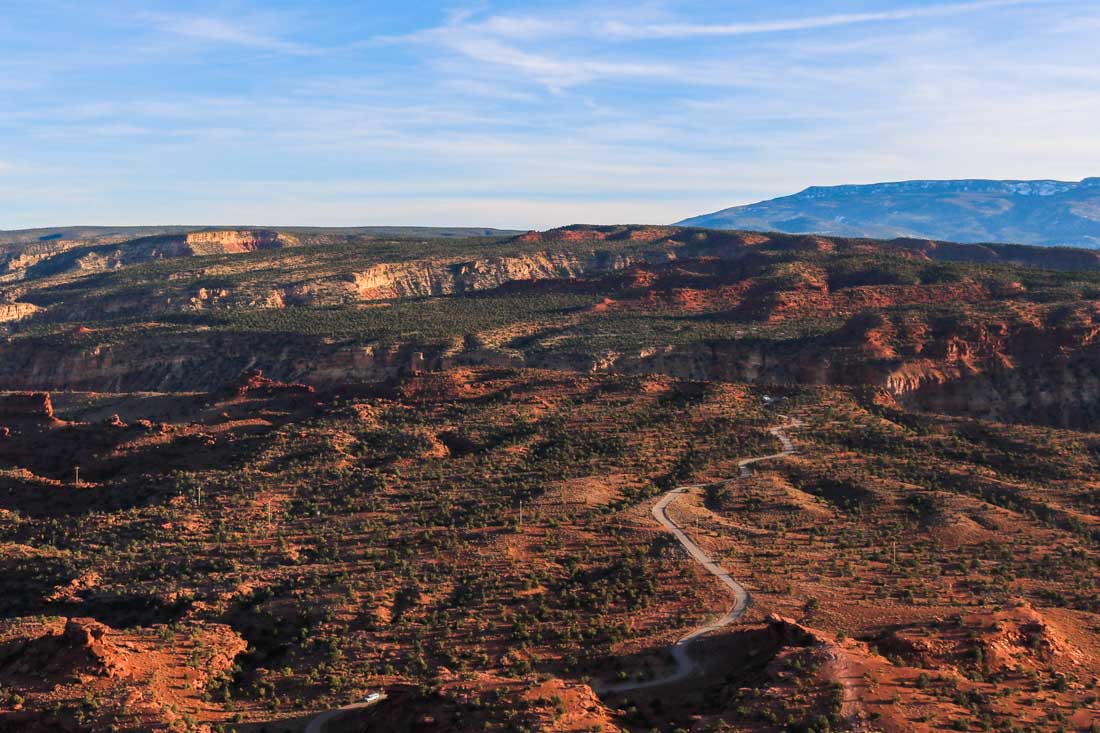
Where to Stay When Visiting Capitol Reef National Park?
The only accommodation option within the Capitol Reef boundaries is camping. The Fruita Campground, consisting of 71 sites, is the park’s only developed campground.
If you’re visiting between March 1 and October 31, make sure to reserve a spot. In the low season, November through February, all sites are first-come first-served.
There are also two free primitive campgrounds in the park—the Cathedral and Cedar Mesa campgrounds. Both have picnic tables and pit toilets, but note that there’s no drinking water available.
If you’d like to go backcountry camping, you need a backcountry permit, which is available for free at the visitor center.
Alternatively, the Bureau of Land Management (BLM) lands surrounding the park offers free, no-facility camping as well. If the Fruita Campground is full, this is a fantastic second option to have.
I did some BLM camping near Capitol Reef National Park myself when I visited the park. It’s awesome and I strongly recommend it.
In case you want some more luxury, there are some hotels and motels in towns near the park as well.
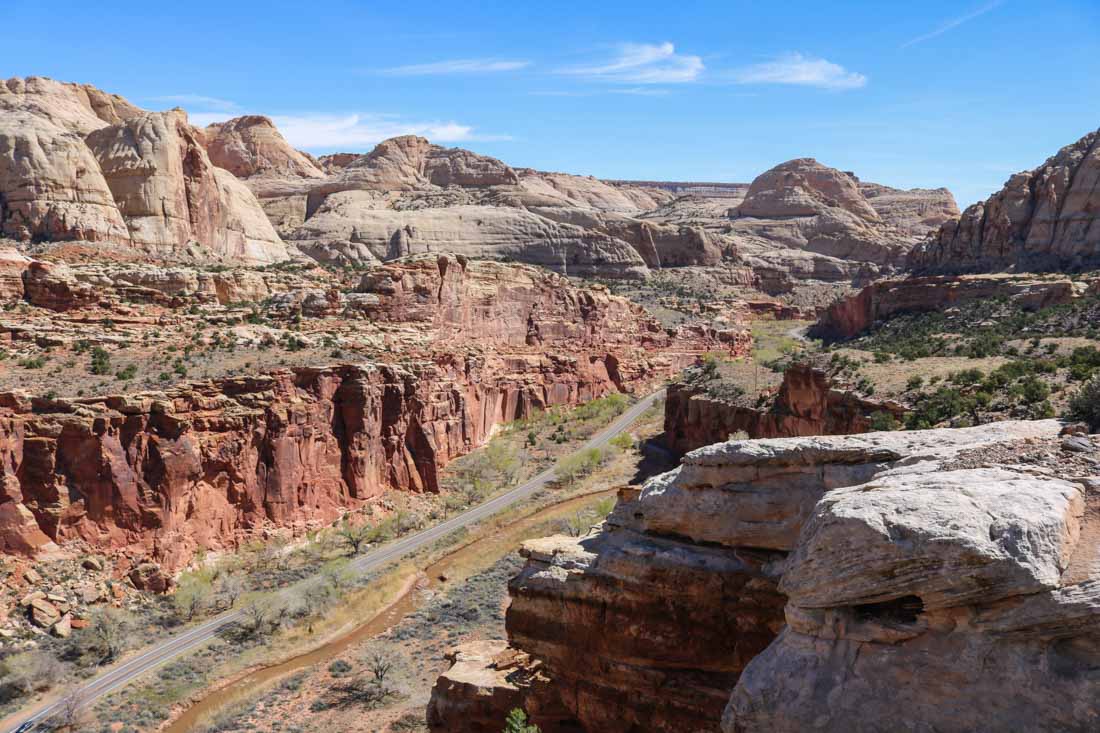
Other National Parks to Explore
- Death Valley National Park Attractions
- Petrified Forest National Park Attractions
- Canyonlands National Park Attractions
- Crater Lake National Park Attractions
- Hot Springs National Park Attractions
- Mount Rainier National Park Attractions
- Joshua Tree National Park Attractions
- Shenandoah National Park Attractions
- Cuyahoga Valley National Park Attractions
- Arches National Park Attractions
- Great Sand Dunes National Park Attractions
- Olympic National Park Attractions
- Theodore Roosevelt National Park Attractions
- Mesa Verde National Park Attractions
- Haleakala National Park Attractions





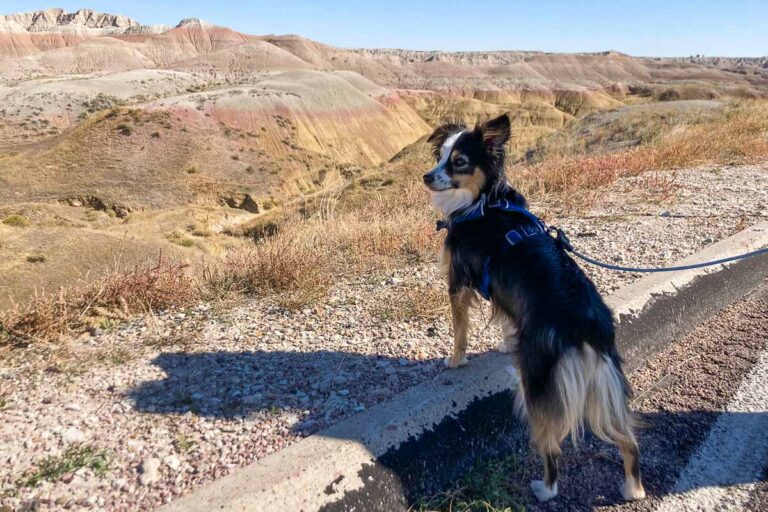
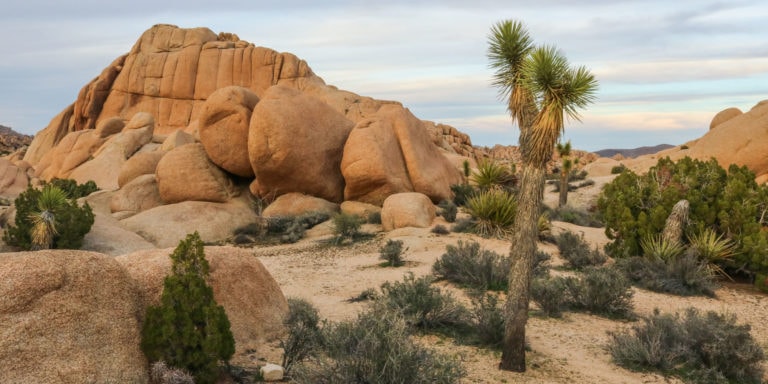
That looks like such an amazing destination.
I would love to visit it.
It’s absolutely beautiful, Wesley!
Very beautiful national park. your picture photography is very beautiful and interesting. Good Job.
I’m glad you like it, Anthony!